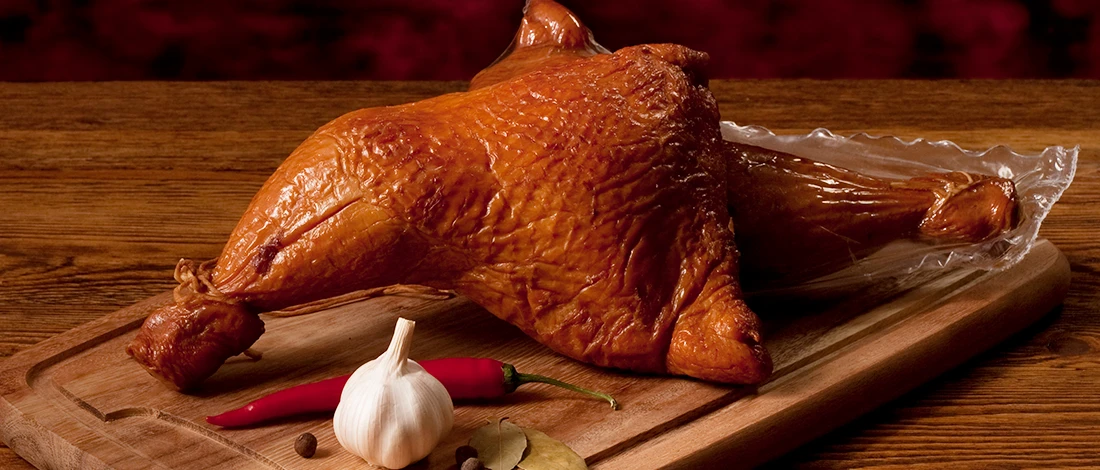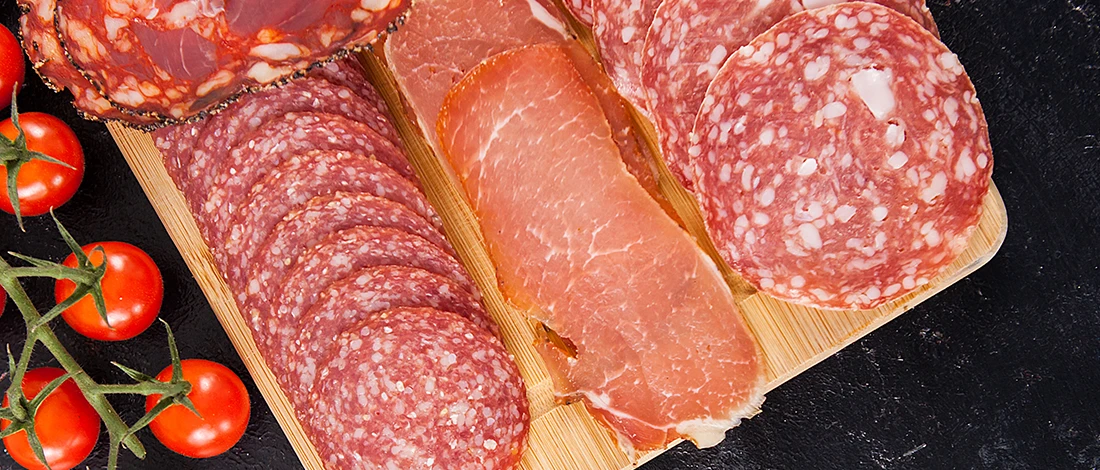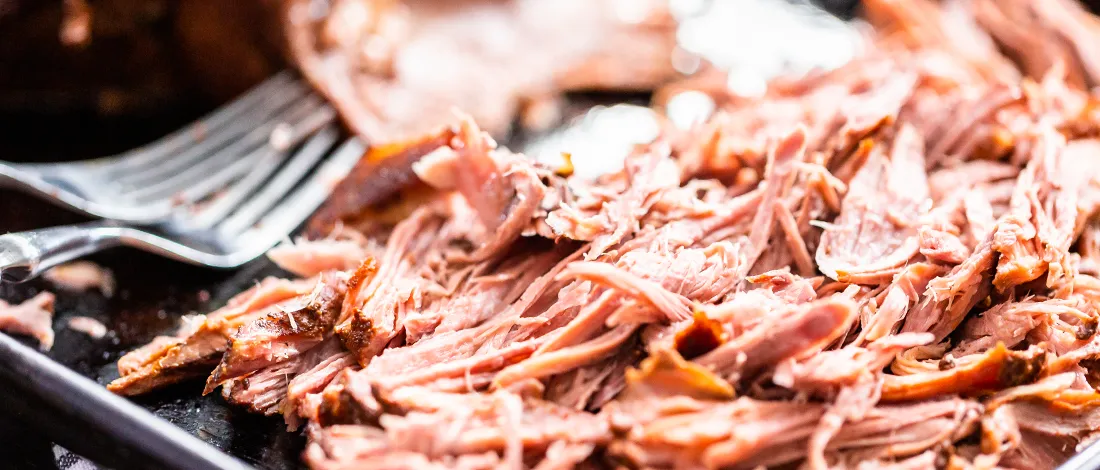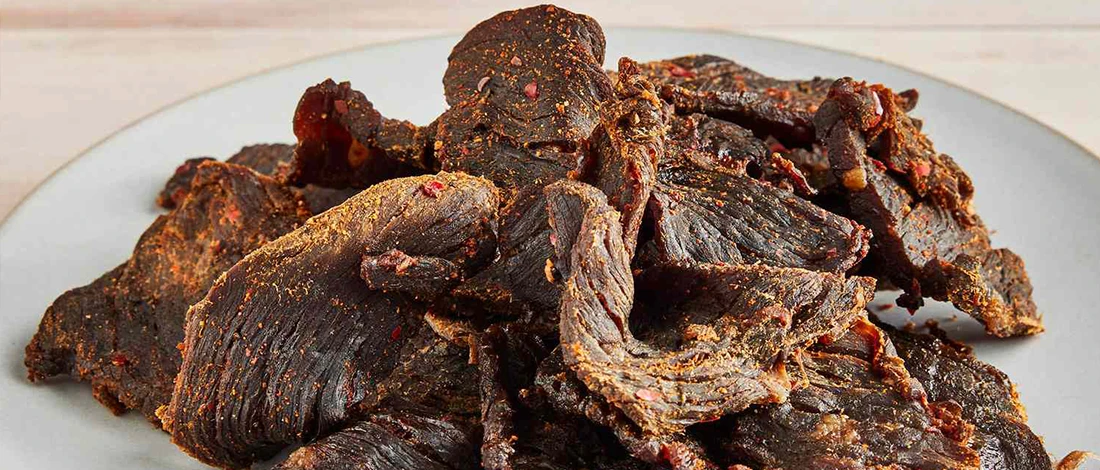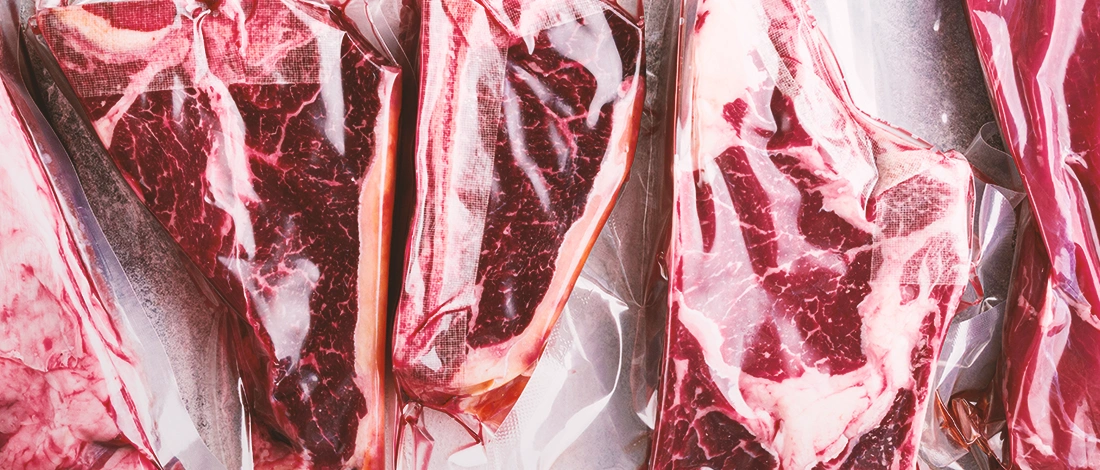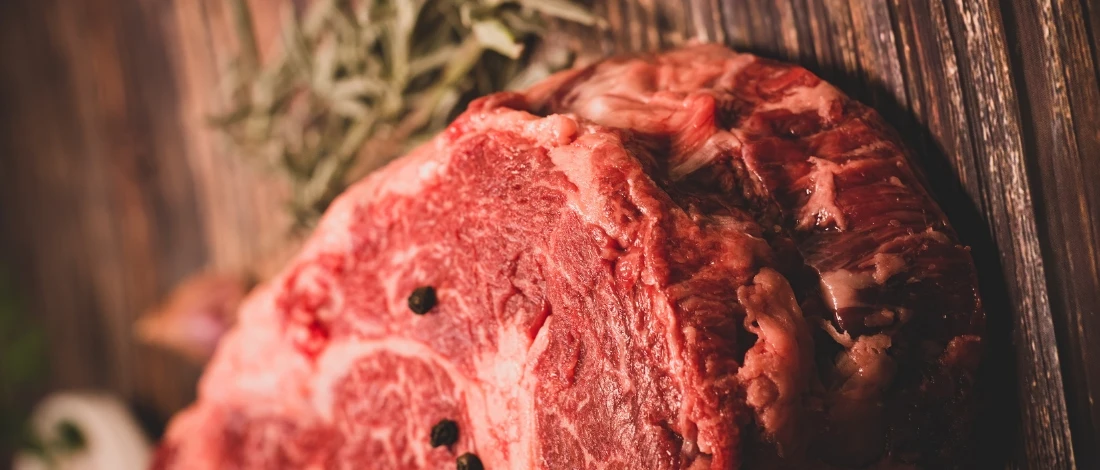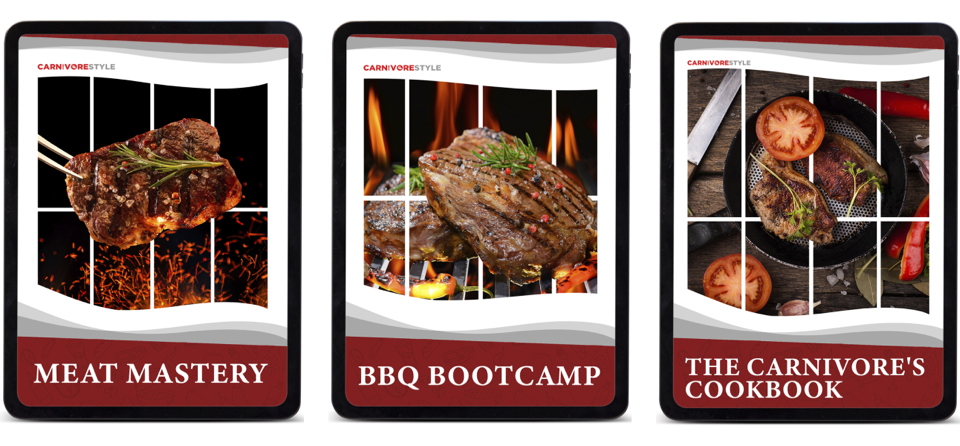Vacuum-sealing technology has been around for a long time, and its use has increased in the meat industry.
At Carnivore Style, we’ve explored the best ways to store and preserve meat to help you keep your carnivore diet fresh and satisfying.
After doing some research, we have determined how vacuum-sealing can prolong the shelf life of your meat.
Quick Summary
- Vacuum-sealed meat can last up to two weeks in the fridge and two to three years in the freezer.
- Vacuum sealing extends the shelf life of meat by removing air and preventing bacterial growth.
- Freshness, refrigerator or freezer temperature, and the type of lamination used affect the shelf life of vacuum-sealed meat
How Long Can Vacuum Sealed Meat Last?
Vacuum-sealed meat can last up to two weeks in the refrigerator and up to 3 years in the freezer. The average shelf-life of vacuum-sealed meat varies depending on the type of meat, its freshness at the sealing time, and storage conditions.
Here’s a breakdown of the type of meat and how long it can last in the refrigerator and freezer when vacuum-sealed:
- Beef: 2 weeks in the refrigerator and up to 3 years in the freezer
- Poultry: A week in the refrigerator and 12 months in the freezer
- Pork: 2 weeks in the refrigerator and up to 2 years months in the freezer
- Fish: A week in the refrigerator and 12 months in the freezer
Vacuum-Sealing Basics

The process of vacuum-sealing meat is pretty simple. You just put the raw meat in a plastic bag, seal it, and then use a vacuum sealer to remove the air from the pack.
The vacuum sealer creates a tight seal around the raw meat, which prevents oxygen from getting to it.
Oxygen is one of the critical elements that cause meat to spoil. When oxygen hits meat, it promotes the growth of bacteria that can make you sick.
With vacuum packaging, you are essentially putting it in a controlled environment where it can't be exposed to oxygen.
Other things that affect the shelf life of vacuum-sealed meat include:
- How fresh the vacuum-packed meat is and its pH level prior to the vacuum sealer
- Using the right temperature in your refrigerator or freezer before proceeding with the vacuum sealer
- Type of lamination used with the vacuum sealer
- Marinade in the bag may create ice crystals
To avoid meat spoilage, you can have reliable suppliers deliver meat to your home every month so you do not have to store it for long.
ButcherBox is my favorite subscription service because it offers high-quality, humanely raised meat for a very reasonable price. They also deliver their subscription packages in perfectly sealed and preserved insulated boxes.
Tips For Storing Vacuum-Sealed Meat

Now that you know the basics of how vacuum-sealing works, here are some tips to help you get the most out of this preservation method:
- Vacuum-seal meat that is as fresh as possible. The fresher the meat, the longer it will last in storage.
- Store vacuum-sealed meat in the refrigerator or freezer at the proper temperature. The colder the temperature, the slower the growth of bacteria.
- Use a high-quality vacuum sealer. Cheaper sealers may not remove all the air from the bag, which could cause the meat inside to spoil faster.
- Use a heavy-duty plastic bag. Thin bags are likely to tear, which could expose the meat to oxygen and make it unfit for human consumption.
- Vacuum-seal meat in small portions. This will help the meat thaw faster and it will help prevent waste.
- Use a food-grade lamination. This will create a stronger seal and prevent oxygen from seeping through the vacuum packaging.
Following these tips ensures that your meat products stay delicious for weeks or even months with the vacuum packaging.
You Might Also Like: How Long Is Deli Meat Good For?
3 Factors that Determine Vacuum-Sealed Meat Shelf Life
Now, let's talk about how vacuum-sealing affects the shelf life of meat. In general, vacuum-sealed meat products will last 2-3 times longer than traditional storage methods.
Here are some factors that determine the overall shelf-life of vacuum-sealed meat:
1. Room Temperature
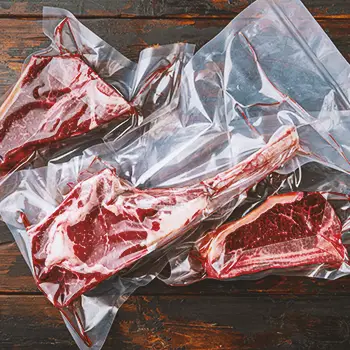
First, fresh meat or fresh fish left out at room temperature will spoil much faster than meat stored in the fridge or freezer. This is because bacteria grow much faster at warmer temperatures, and bacterial growth is one of the prime causes of meat spoilage.
If you were to leave a piece of raw meat on the countertop, it would last no more than two hours before it started to spoil. However, if you vacuum-sealed that same piece of meat and left it on the countertop, the storage time could be up to a day.
That said, the USDA does not recommend storing vacuum-sealed meat at room temperature because there is always a risk of bacteria growth, even with the lack of oxygen. Instead, you should keep your meat in a much colder location, meaning it's better stored in the freezer.
Also Read: How to Tell If Steak Is Bad?
2. Refrigerator
Raw meat in the fridge will usually last 2-3 days before it spoils. The cold temperature of the refrigerator slows down bacterial growth, which helps raw and vacuum-sealed cooked meat stay fresh.
This shelf life is further expanded by vacuum-sealing. Vacuum-sealed meat stored in the fridge can last up to two weeks before it starts to spoil and cause food poisoning.
This broad time range is due to several factors, but the most critical one is the refrigerator's temperature.
Bacteria grow quickest in the "Danger Zone," between 40°F and 140°F [1]. If your fridge is set to a temperature below 40°F, the bacteria will grow much slower, and the storing method will increase shelf life.
On the other hand, if your fridge is warmer than 40°F, the bacteria will grow faster, and the meat will spoil towards the lower end of the time range.
"Consuming dangerous foodborne bacteria will usually cause illness within 1 to 3 days of eating the contaminated food. However, sickness can also occur within 20 minutes or up to 6 weeks later."
- U.S Food & Drug Administration
3. Freezer
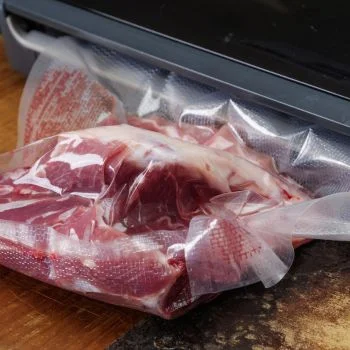
The freezer is the best place to store vacuum-sealed meat because it will keep the meat products fresh for the longest period. You should keep the freezer at 0°F or below for optimal storage [2].
Most bacteria will fail to grow at this temperature, and the meat products will be safe for an extended time.
Raw meat products stored in the freezer typically lasts six to eight months before it spoils. The frigid temperature of the freezer stops bacterial growth, which gives the meat a longer shelf life.
This shelf life is even longer for vacuum packaging. Vacuum-sealed pork or other frozen meat products can last for two to three years before going bad or getting a freezer burn.
Related Articles:
Vacuum Sealing Meat for Delivery
A vacuum sealer, vacuum seal bags, a rolling pin for flattening the meat, and a permanent marker for labeling are essential for the process of making the meat ready for delivery.
A good vacuum sealer includes a barrier that prevents air, water, and unpleasant tastes from entering the package. With this approach, your beef will taste just as it did before delivery. Vacuum sealers are beneficial for sous vide meals, preservation of fish following a fishing expedition, and even protecting important minerals from exposure to air. They prolong shelf life and enable bulk delivery.
- Meat should be vacuum-packed in tiny quantities as soon as the butcher chops it. This is necessary to prevent ice crystals from accumulating on it and keep it fresh for up to a year.
- When you measure the meat and put it in a package, you will want to flatten it all for two reasons. One is that the meat stacks better when each packet is flat. The second is that thin, flat packs of flash-frozen meat defrost faster. After delivery, faster thawing periods mean you can get your delicious meals on the plate as early as possible, avoiding freezer burn.
- Lastly, mark the dates on the meat packages using a permanent marker. This allows you to keep track of which meat pack should be delivered first.
FAQs
How Can You Tell if Vacuum-Sealed Food Is Rotten?
You can tell if vacuum-sealed food is rotten by its scent, color, and texture. A meat product should not smell sour, rancid, or fishy. The color should be uniform and not have any brown or green patches. The consistency should be firm with good elasticity, not mushy or affected by freezer burn.
Is Gray Steak Safe to Eat?
Gray steak is safe to eat. The gray color is due to the lack of oxygen in the properly vacuum-sealed bag and is not an indication of spoilage.
How Long Does Vacuum-Sealed Meat Last In The Fridge?
Vacuum-sealed meat will last in the fridge for six to ten days.
Does Vacuum-Sealed Meat Need To Be Refrigerated?
Yes, vacuum-sealed meat needs to be refrigerated at 0°F for more extended storage.
Why Does Vacuum-Sealed Meat Turn Brown?
Vacuum-sealed meat turns brown due to a lack of oxygen in the bag.
Carnivore Style is committed to bringing you the best tips and techniques to ensure your meat stays fresh and delicious for longer. With proper vacuum sealing, you can enjoy your meals at their best, even after storing them for months.
References:
- https://www.fsis.usda.gov/food-safety/safe-food-handling-and-preparation/food-safety-basics/refrigeration
- https://www.fsis.usda.gov/food-safety/safe-food-handling-and-preparation/food-safety-basics/freezing-and-food-safety


